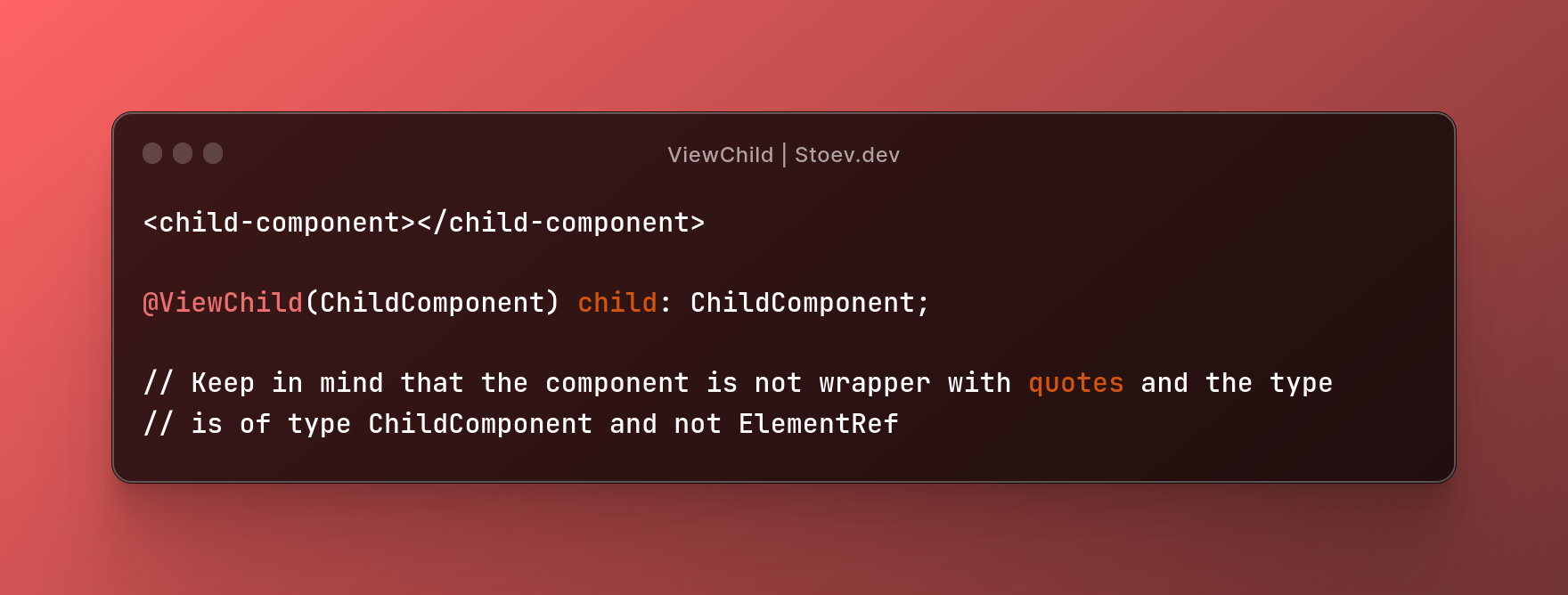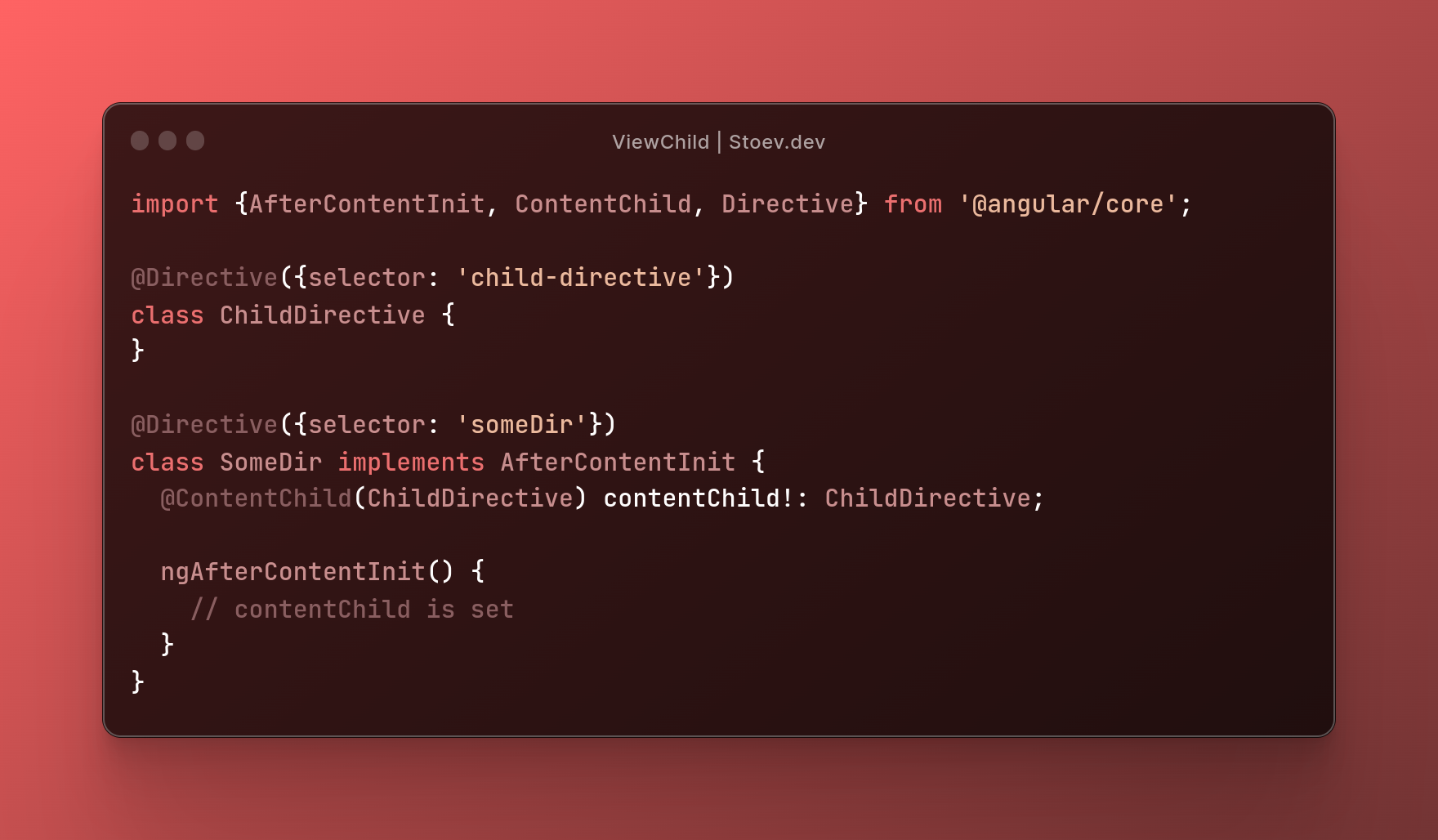
ViewChild && ViewChildren
template variables are visible only in the HTML and not the components
In order to have access to template variables we use the "@ViewChild('name_of_variable')". The viewChild is an ElementRef and it doesn't have direct access to the element, but the nativeElement has.

In order to get the ChildComponent, the syntax is:

@ViewChildren('name_of_variable_one','name_of_variable_two')
QueryList<T> - this is a generic class. We can pass reference as ElementRef or any other component
The list that is generated with the @ViewChildren is a dynamic one, so any update on the children is going to reflect on the list.
Content Child && Content Children
Content children come from another component's view/template.
@ContentChild and @ContentChildren are often used when implementing expand/collapse components such as tabs, accordions and menus.
In the Angular documentation we read that
ContentChild gets the first element or the directive matching the selector from the content DOM. If the content DOM changes, and a new child matches the selector, the property will be updated.
Another thing to point out is
Content queries are set before the ngAfterContentInit callback is called.
